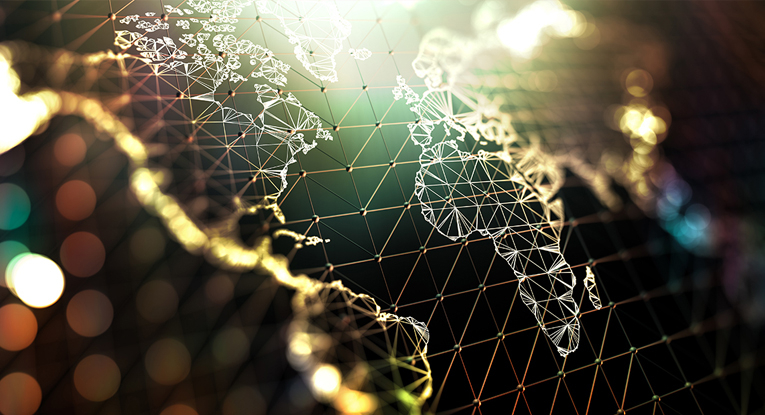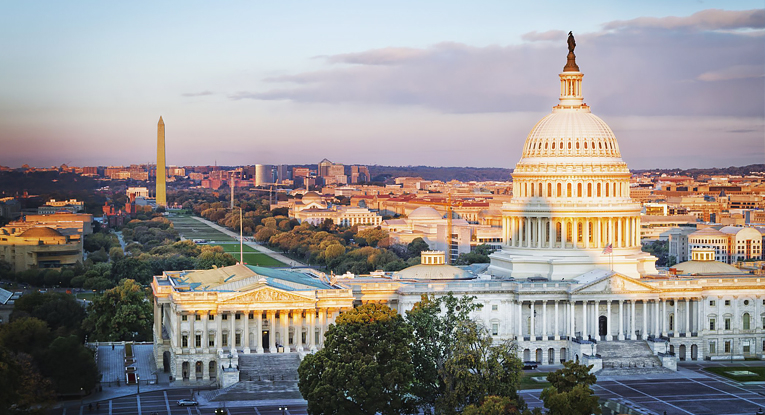A Simple Case About a Suitcase: Will the Supreme Court Revisit the Law of Patentable Subject Matter?
The 36 Words That Are Confusing Almost Everyone
What inventions are patentable? There are a number of requirements but perhaps the most fundamental is whether you can obtain a patent on your kind of invention at all. If, according to the relevant statute, your invention isn’t a “new and useful process, machine, manufacture, or composition of matter . . . ” then you’re out of luck. For example, the Federal Circuit held in 2007 that a claim directed to an electromagnetic signal per se was not patent eligible because the claimed signal was not a process, machine, manufacture, or composition of matter. Given that the section at issue is a mere 36 words long and so emphatic, you’d be forgiven for thinking that there would be little case law addressing patentable subject matter apart from the previously described outlier. However, the Supreme Court has had other ideas.
Bilski, Mayo, Myriad and Alice: The Four Horsemen of the Apocalypse
In the 1980 case of Chakrabarty, the patent eligibility of a genetically modified organism was at issue. There, the Court cited the legislative history of the Patent Act indicating a Congressional intent that patentable subject matter should “include anything under the sun that is made by man.” Chakrabarty was very much the high watermark of the Court’s expansive approach and the Court did not revisit this area of law for about 30 years. When the Court did so in Bilski, a claim “directed to” a method of hedging risk in commodity trading was at issue. The Court held that the Federal Circuit’s long-standing test for patentable subject matter eligibility was not the exclusive test. Bilski started the ball rolling because the Court in Mayo subsequently held that a claim reciting a method of medical testing was “directed to” a patent-ineligible law of nature. Myriad was next with the Court holding that a claim reciting an isolated natural substance was “directed to” a patent-ineligible product of nature. Finally, the Court in Alice held that a claim reciting a method of computerized implementation of an intermediated settlement was “directed to” a patent-ineligible abstract idea.
At this point, you may be wondering as to whether the subject matter at issue in Mayo, Myriad and Alice falls into some kind of implicit exception to the processes, machines, manufactures, or compositions of matter recited in the statute. However, Justice Clarence Thomas, normally an avowed textualist, acknowledged in Alice that the Court had been reading implicit exceptions into the statute for over 150 years and promptly did so again. In an article stemming from a presentation I made to the ACC in 2021, I questioned whether Alice’s implicit exceptions to the statutory language were in tension with some of the Court’s recently decided cases holding that there are no implicit exceptions to the language of civil statutes.
The Need for [One] Direction on the Meaning of “Directed to”
The earlier use of quotation marks surrounding the words “directed to” is not an affectation but rather key to the whole matter. Specifically, the claims at issue in Mayo, Myriad and Alice were not directed to patent-eligible subject matter. And herein lies the rub: Courts, patent examiners, practitioners, inventors and litigants have in many cases been struggling to identify claims that are directed to patent-eligible subject matter. For example, an en banc panel of the Federal Circuit recently denied rehearing of a case holding that a claim reciting a method of medical diagnosis was directed to a patent-ineligible law of nature. However, the decision included four separate concurrences and four separate dissents. Vanda, though, was contrary to the general trend toward a restrictive approach to patentable subject matter. There, the Federal Circuit found a claim “directed to a specific method of treatment for specific patients using a specific compound at specific doses to achieve a specific outcome” to be patent eligible. In spite of Vanda’s clear requirement for specificity, the U.S. Patent and Trademark Office (USPTO) has taken the position that a claim reciting a method of medical testing, such as the claim at issue in Mayo, is directed to patent-eligible subject matter if the claim recites a generic treatment step. While some would argue that such a position is laudable as a return to a more expansive approach to patentable subject matter, the USPTO’s logic appears at first blush to be in tension with Vanda.
Then the Wheel Fell Off the [American] Axle
In 2018, I and other members of the patent bar believed that if the Court took American Axle then there could be a return to a more expansive approach to patentable subject matter. At issue that case was whether a claim reciting a method of attenuating the vibration of a shaft used to direct power in an automobile was directed to a law of nature. Unlike the computerized method of conducting a transaction at issue in Alice, the claim at issue in American Axle was very much grounded in the physical world. Despite this clear distinction, the majority of a Federal Circuit panel nevertheless held that the claim at issue in American Axle was directed to a patent-ineligible law of nature. However, the Federal Circuit’s account of what the law of nature actually was left a lot to be desired and the dissenting judge memorably stated that “the majority’s validity goulash is troubling and inconsistent with the patent statute and precedent.” A petition for certiorari followed and nearly a dozen parties submitted amici briefs. Subsequently, the Solicitor General urged the Court to take the case, which raised hopes of a grant certiorari. Yet the Court declined to do so.
Tropp: A [Suit] Case in Point
After the terrorist attacks of Sept. 11, 2001, there was an increased focus on airline security. However, increased screening of baggage resulted in a predictable problem: How could an officer of the newly established Transportation Safety Administration (TSA) open a locked piece of luggage without permanently damaging the lock? Independent inventor David Tropp’s solution was a two-part lock with one part being a conventional combination lock that a traveler could open and the other part being a keyed lock for which only TSA officers had the key. Tropp subsequently obtained two method patents in connection with the use of his locks and an infringement suit against a rival lock manufacturer subsequently ensued. You can see some of Tropp’s products here and one of the rival’s products here. Unfortunately for Tropp, the district court hearing his case held that his “method patents have essentially described the basic steps of using and marketing a dual-access lock for luggage inspection, a long-standing fundamental economic practice and method of organizing human activity.” In other words, the claimed method was directed to a patent-ineligible abstract idea. On appeal, the Federal Circuit affirmed in a terse per curiam opinion and Tropp subsequently submitted a petition for certiorari. The Court requested the views of the Solicitor General late last year but she has not provided those views as of the date of publication of this article. In any event, the Court requested similar views in connection with American Axle but the Court nevertheless did not take the case. Given these facts, it would initially appear that the chances of the Court will grant certiorari are slim.
Will the Conundrum Be Solved with a KIS?
Given the prevalence of jury trials in civil litigation, the KIS principle must surely apply: keep it simple. For example, many patent lawyers would likely be of the opinion that a strategic claim amendment can trump 20 pages of legal argument. And, understandably for nine justices with an incredibly heavy docket, the KIS principle seems to apply to the Court. This is evidenced by the fact that I could describe in a single sentence each of the claims at issue in Bilski, Mayo, Myriad and Alice. While there is a limit to the KIS principle—one justice in Myriad could not join “some portions of . . . the [majority’s] opinion going into fine details of molecular biology”—it is clear that the Court’s preference is for a simple case rather than a complex one. Indeed, the claim at issue in Tropp is so simple as to be similarly amenable to description in a single sentence. Moreover, travelers must regularly see Tropp’s locks or the products that are the subject of the dispute. Even Tropp’s Question Presented is straightforward: “Whether the claims at issue in Tropp’s patents reciting physical rather than computer-processing steps are patent-eligible under . . . Alice . . . .”
Opining as to what the Court will do in any given situation is usually a fool’s errand. As someone who predicted that the Court would take American Axle, I have been wrong before. But like the risk hedging at issue in Bilski, the medical testing at issue in Mayo, the isolated product-of-nature at issue in Myriad, and the computer-implemented transaction at issue in Alice, the technology at issue in Tropp is so simple and so approachable that there is a very real chance that the Court will grant certiorari. While Tropp may not ultimately prevail—it’s entirely possible that the Court will tweak Alice and leave the ultimate fate of his patents in the hands of the lower courts—some stakeholders might argue that the Court’s current approach to patentable subject matter is difficult for lower courts to apply, results in unpredictable outcomes, and has caused significant uncertainty regarding the investment of resources. In their eyes, therefore, the Court’s current approach to this area of law requires adjustment. American Axle was apparently not a desirable vehicle for revisiting what I have termed “the conundrum of patentable subject matter.” But perhaps Tropp is.


































